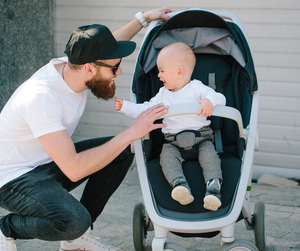Tricks to Relieving Trapped Wind in Babies
Do you have a baby that is constantly fussy and gassy? If so, you may be looking for ways to relieve trapped wind. This can be a difficult task, but it is not impossible. In this blog post, we will discuss some of the best ways to do just that!

How long can wind stay trapped in baby?
The amount of time that wind can stay trapped in baby depends on a few factors. First, how much wind was consumed? Second, how tight is the seal between the stomach and intestines? And third, how irritable is the intestine?
If your baby has a lot of air in their stomach, it may take longer for them to pass it. If the seal between the stomach and intestines is tight, it may also take longer for the wind to pass. And if the intestine is irritable, it may take even longer!
Does Infacol help with wind?
There are many products on the market that claim to help with relieving wind, but not all of them are effective. One product that has shown to be effective in relieving wind is Infacol.
Infacol is a product that contains simethicone. This ingredient helps to break down the gas bubbles in the stomach so that they can be passed more easily.

How do you use Infacol?
To use Infacol, simply give your baby the recommended amount before or after a feed. The amount that you give will depend on your baby’s age and weight. You can find the recommended amount on the Infacol website or on the package itself.
So, how else can you relieve trapped wind in babies?
In addition to using Infacol, there are a few other things that you can do to help relieve trapped wind in babies.
- burp your baby frequently
- hold your baby upright during and after feeds
- avoid overfeeding
- try infant massage
If you follow these tips, you should start to see a difference in your baby’s wind patterns. Just remember to be patient, as it may take a little time for the trapped wind to work its way out!

How to tell if baby has wind or is hungry?
It can be difficult to tell if a baby is hungry or has wind. However, there are a few cues that you can look for. If your baby is rooting around, making sucking motions, or putting their fist in their mouth, they may be hungry. However, if your baby is crying and seems to be in pain, they may have wind.
If you’re ever unsure, it’s always best to err on the side of caution and feed your baby. They may not be hungry, but a little bit of milk will do them good!
Hopefully, these tips will help you to relieving trapped wind in babies. Remember to be patient and always consult with your doctor if you have any concerns. Infacol can be a great tool to help relieve some of the discomfort that comes along with trapped wind. And finally, don’t forget that burping your baby frequently can also help!




